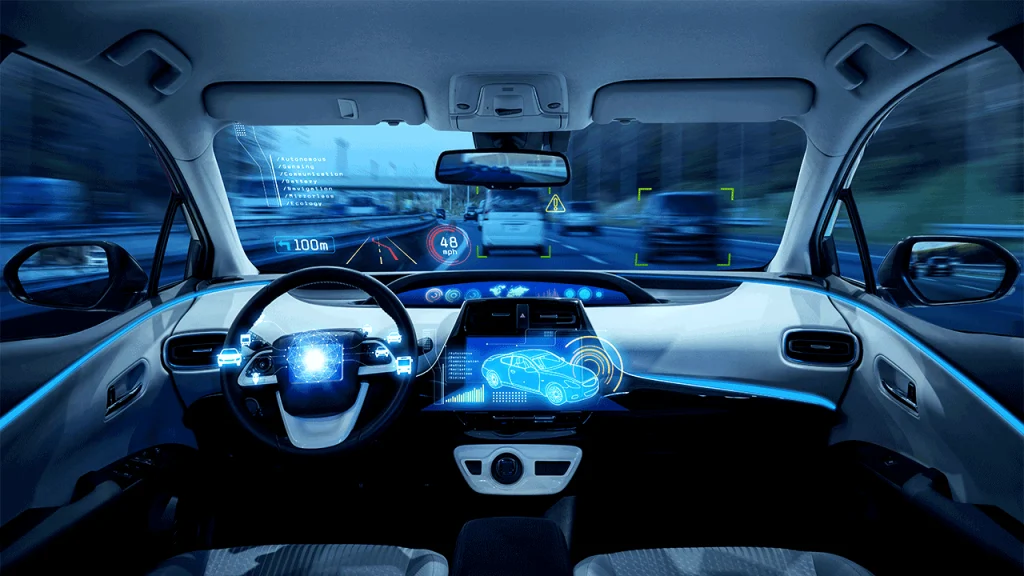Level 5 autonomy is fully automatic handling of driving tasks to your vehicle, leaving the driving for you to chill, enjoy a movie or game rather than drive yourself – even get a nap!
Already ADAS systems have already been instrumental in improving safety by reducing human error, which remains the biggest contributor to accidents.
Level 3
Fully autonomous cars haven’t arrived on the market, even in the retail space, although a number of companies are sponsoring the push to make it public. Although perhaps we could someday be in these cars ourselves with more protection on the hook.
The majority of cars today have systems compliant with SAE Level 2 automation enabling the driver to drive while maintaining attention to the road and being able to intervene at will. These ADAS (Advanced Driver Assistance System) help them to drive easily but also make them be attentive of any safety threats or takeover possibilities.
Level 3 autonomy means a vehicle can drive itself under some conditions and environments, with a human driver there at all times in case it needs to intervene. The GPS location systems and V2X communication aid situational awareness, and such vehicles often come with dynamic path planning and navigation to augment situational awareness, enabling drivers to nap on the go.
Level 4
Smart self-driving vehicles utilize advanced cameras and radar sensors, augmented by artificial intelligence (AI), machine learning, and data analysis to accurately determine and process information at high speeds. V2X connectivity further increases awareness of its operating environment, while backup and driver management ensure complete control is always on hand.
Tesla Autopilot, Cadillac Super Cruise, and other vehicle ADAS are examples of this kind of ADAS. Such technology would require drivers to stay alert and focused to function, but the payoff is glaring: increased safety.
Level 3 driving is the default now; Level 4 driving, proper hands-free driving over long distances. At this point, AVs could drive anyplace, in any weather, and with or without steering wheels and accelerator pedals – driverless “robotaxis” could change car ownership and how customers perceive the ownership experience.
Level 5
To get to level 5 autonomy will require sensors, AI and computers – not to mention fundamental changes in how we drive: fewer crashes and road jams; better fuel economy; and making driving more accessible to more people.
At this level, an autopilot will do all driving functions on its own, such as keeping track of speed and position in a lane, merging into and out of freeways as needed, observing traffic signals and warning signs, maintaining safe distances and speeds, and alerting to potential collisions or traffic hazards.
Drivers will continue to need to be available to take over, but the machine itself can drive itself in most situations without any operator’s intervention – traffic jams, bad weather and road works. While technology companies like Waymo have already started piloting Level 4 robo-taxis in their public ride-hailing business in Phoenix and San Francisco, the actual technology will not be readily available to the consumer for many years, because safety and security issues simply prevent it.
The Road Ahead
Even with Level 1 solutions like ADAS that reduced the incidence of rear-end accidents there’s still a long way to go before fully autonomous vehicles. Autonomous vehicles at Level 5 are capable of travelling anywhere on roads, in any environment – without wheels or pedals; beyond geofence; requisitioned by drivers to be taken anywhere.
At Level 5, developers will have to test the technology on millions of miles without killing anyone – it can take months to do so.
To achieve Level 5 autonomy you’ll need specialized sensors and computers that will crunch big amounts of real-time data in a matter of seconds to sniff out threat signals. That system would then be able to make quick decisions in a way that humans can’t; not only that, the system would have to read subtle signals humans use to respond to driving situations, including facial expressions and body language.
About Author
You may also like
-
Performance Modifications for Specific Driving Conditions: Tuning Your Machine for the Real World
-
The Seamless Commute: How Micro-mobility is Integrating with Your Personal Vehicle
-
The Ultimate Guide to Planning a Birthday Party on a Party Bus
-
AI-Powered Predictive Maintenance for Everyday Drivers: Smarter Car Care Before Breakdowns Happen
-
The Rise of the Hummer – How the Vehicle Became a Cultural Icon of the 1990s
 Restoration Techniques for Vintage Car Electrical Components: A Hands-On Guide
Restoration Techniques for Vintage Car Electrical Components: A Hands-On Guide 

